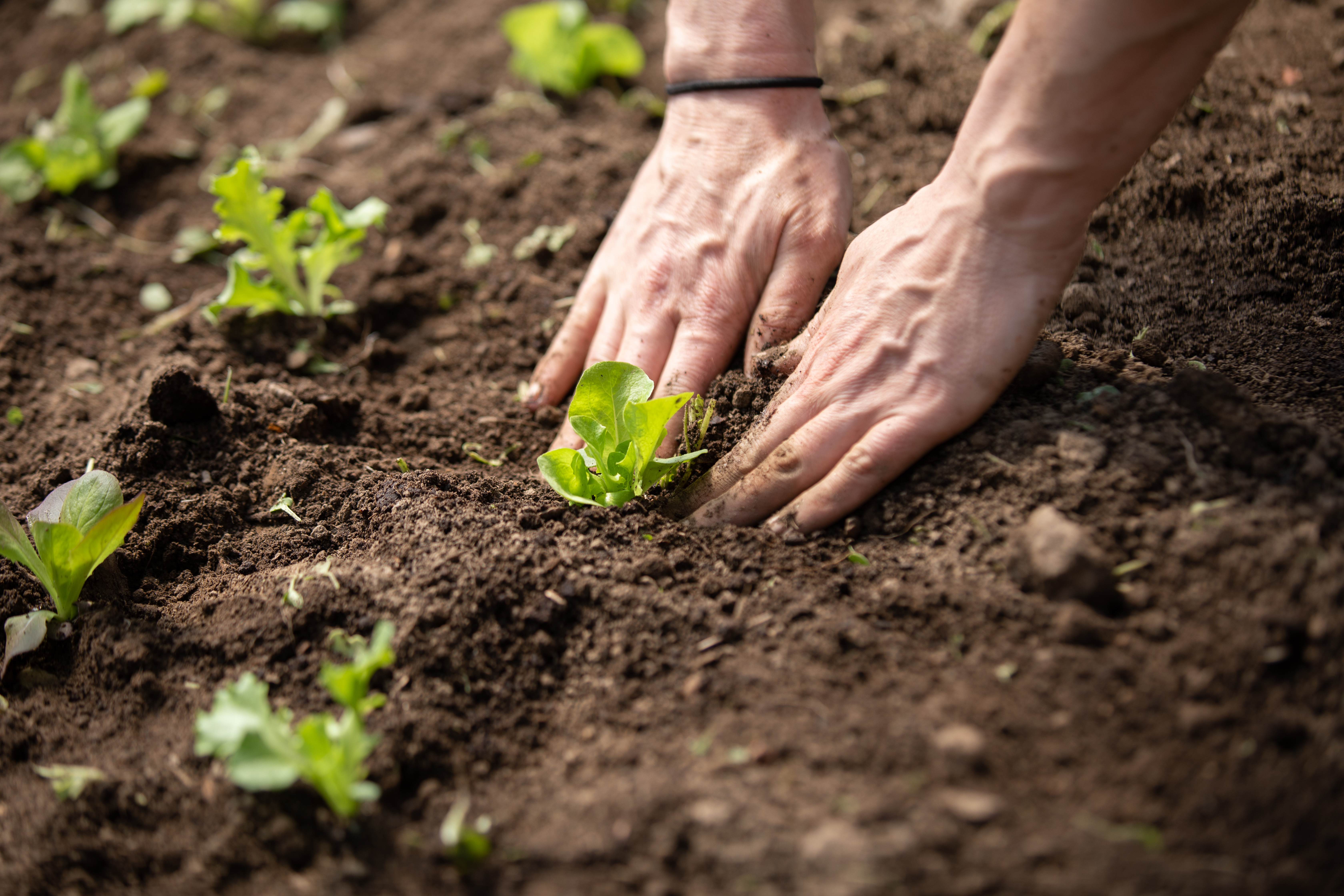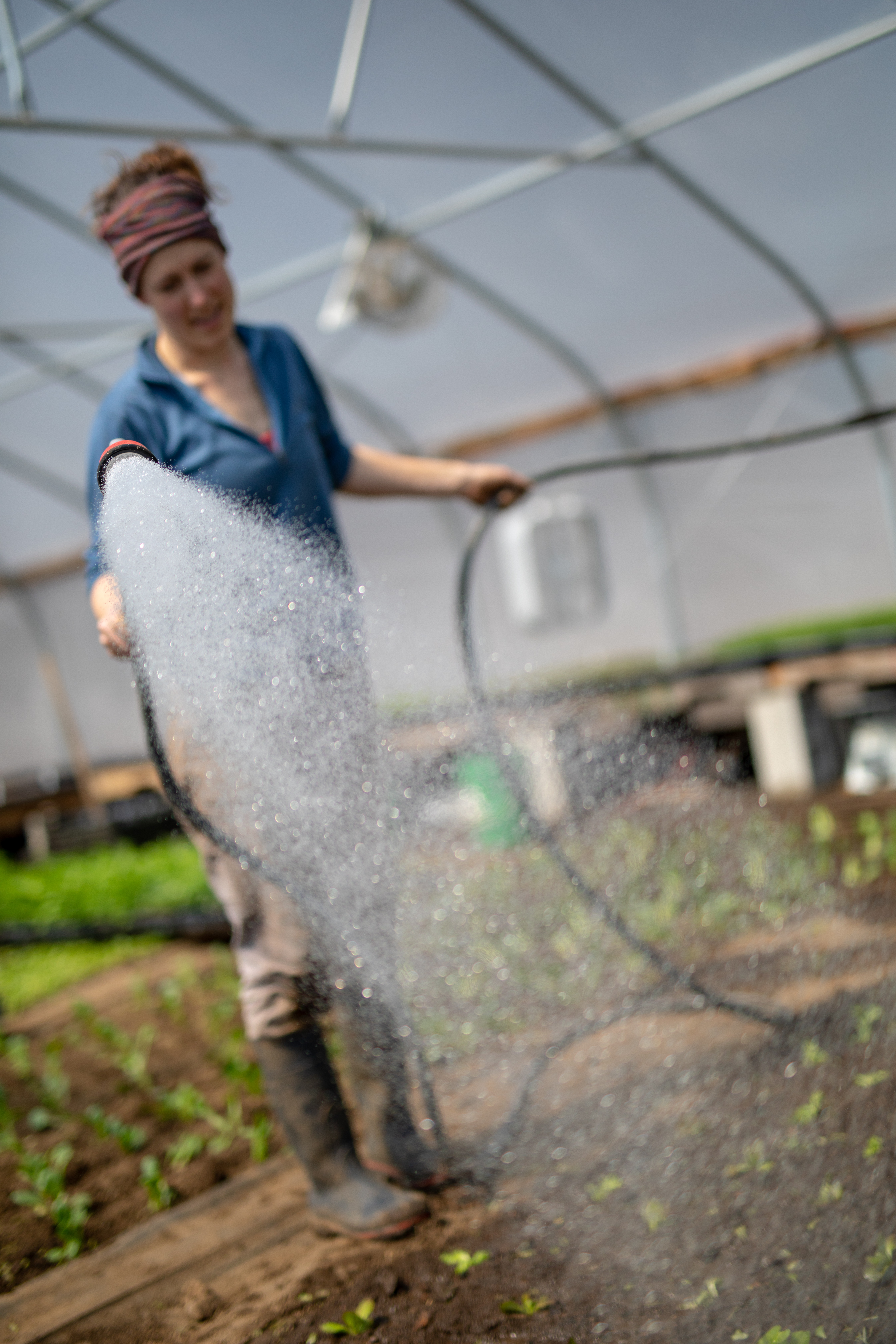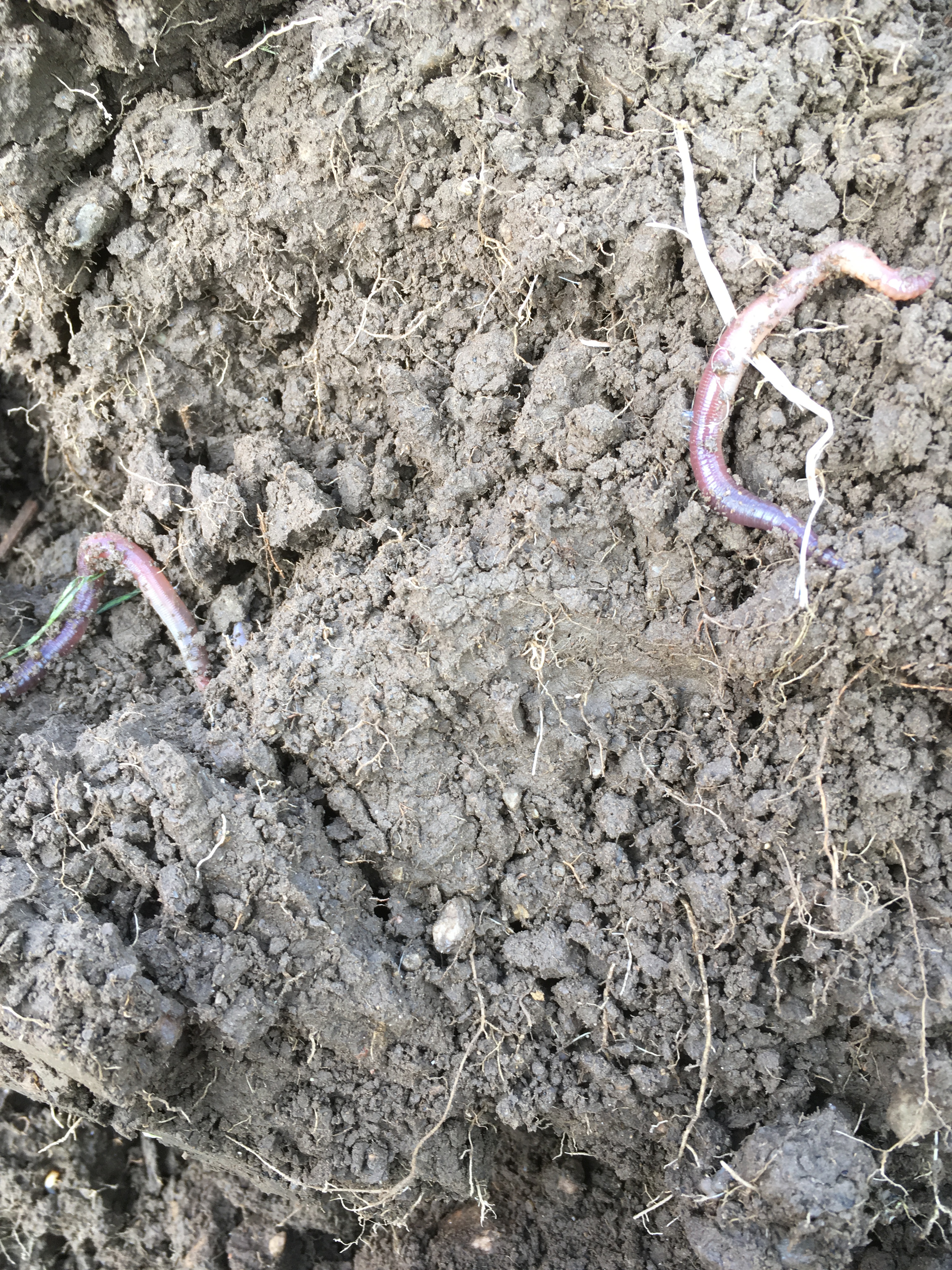 photo credit: Bob Durling
photo credit: Bob Durling
Your garden soil is a living organism. Try not to think of your vegetables and flowers as what you are caring for. They are your canaries in a coal mine, your spokespeople for the state of your soil. Reading their messages will tell you what your soil needs. Give it what it needs and your plants will send positive messages in the form of healthy, bountiful harvests.
A healthy soil is about 40-45% minerals (ground up rocks in varying sizes), 25% water, 25% air and 5-10% organic matter. Organic matter includes bacteria, fungi, insects, worms, “recently dead” plants, bacteria and fungi and “humus” long-dead organic matter in a stable form. That 5-10% makes a world of a difference in how well your plants will perform. It is said a tablespoon of soil contains a greater variety of species than all the mammals on earth – that’s a pretty diverse ecosystem!
Basic steps to a healthy garden soil:
1 . Add fully decomposed organic matter (Compost).
You can add manure, but it should be already well broken down. Decomposition stimulates a different population of microorganisms than the ones you want to stimulate for healthy plant growth. Too much decomposition and those organisms will take essential nutrients needed by the organisms that support your growing plants.
An inch of compost should be enough for a least one season of growing. Probably good enough for a few seasons if you use some of these other fertility-building methods. Two inches is a great investment, and you don’t need to mix it in. It’s actually better and more natural for the compost to be laid on top of the soil. Think about how organic matter accumulates naturally in a forest or field. Grasses die, leaves fall . . . let the worms and microbes do the work of slowly incorporating the organic matter.
Even if a thick layer of compost is outside of your budget, even just adding a thin layer is better than none at all. (Can you start making some? putting organic matter in the trash when you have a yard is just a waste of high value garden mulch!)
2. Use Mulch.
 photo credit: Sue Rorke
photo credit: Sue Rorke
Soil does not benefit form being bare. Bare soil will quickly be covered by weeds, algae and mosses. These organisms (although annoying to a gardener) serve an incredible purpose. They hold soil together and support the microbial ecosystems which would otherwise be destroyed, eliminating that area’s ability to support life.
Benefits of mulch:
- Weed suppression (if it’s thick enough – don’t skimp!) Weeds aren’t just unattractive and time-consuming to manage. If left unchecked weeds will compete for sun, water and soil nutrition and prevent air-flow which can lead to disease.
- Moisture retention. Mulched soil holds water more readily, requiring less watering.
- Ecosystem support. When you are watering the soil you aren’t just watering your plants, you are watering the ecosystem that supports them. Remember, a healthy soil is about 25% water. By keeping the soil moist with mulch, you are supporting your soil ecosystem.
- Prevent back-splash of soil onto plants, which can cause small abrasions and soil borne-disease.
- Worms love living under mulch. Ever leave something out on the grass for a few days? When you lift it up the worms have come to the surface. Worms will actually start to digest your mulch, pulling their nutrients down into the soil and depositing their worm castings (poop) at the base of you plants. At that point your mulch is becoming fertilizer.
Potential mulch materials:
- Straw (make sure it is weed free)
- Grass clippings (make sure you don’t spray herbicide on your lawn, it will kill your garden plants)
- Cardboard (you can cover with compost or leaves for aesthetic purposes)
- Dead Leaves
- Wood Chips
- Weed free compost
Make sure not to mix mulch into the soil, just layer it on top. Mulch mixed in below the soil surface will stimulate the decomposition bacteria mentioned earlier that take nutrients away form your crops.
3. Don’t over water.
 photo credit: Bob Durling
photo credit: Bob Durling
Most people like to water their garden. It’s easy and it feels like you are doing something good, but many times the “avid water-er” can be causing more harm than they realize. Excess moisture is an excellent environment for most fungal diseases that affect plants. From blight to damping off, all of these diseases can be prevented organically through proper moisture control (unless of course it’s a very rainy year, in which case, you don’t have a lot of options, but mulch and good airflow helps!!).
- Always water the soil, not the plant. Especially tomato plants.
- Make sure the soil around the plant is watered thoroughly, then don’t water again until it begins to dry out. About 1” once/week is enough, 2” if the air is really dry. Remember, a healthy soil has about 25% water and 25% air. The air and water are taking up the same spaces in the soil, so if you have too much water, it’s taking up the space that would otherwise be occupied by air, which is just as important to your soil health. Plus, excess water will “flush” nutrients through the soil and away from your plants.
- Water seeds more, to make sure the soil doesn’t dry out, but once they have germinated cut back on the watering so the stems of your young seedlings don’t “dampen off” a general term which is used to describe seedlings, infected with one of 12 fungal diseases, falling over at the stem and dying.
4. Don’t over work the soil.
 photo credit: Bob Durling
photo credit: Bob Durling
The soil ecosystem is complex and based on layers and levels. Different organisms live in different levels. When you flip or turn the soil, you mix up the levels, inverting the ecosystems. Many organisms die and there is a period of rebuilding which does not support healthy plant growth as well as an undisturbed soil. You also add a lot of air to the soil, increasing the oxygen levels which will cause much of the nitrogen, the least stable but one of the most important nutrients to burn off.
The best way to loosen garden soil is with a digging fork, or a broad fork if you are working with a larger area. Insert the fork into the soil, pull back but don’t lift the fork, just loosen the soil. Step back and insert the fork again, one foot behind your last insertion (backwards is better, so you don’t step on your work). Repeat until all your soil is loose.
5. Consider non-traditional fertilizer options, and don’t forget to test for pH!

Organic farmers still use fertilizers, they just don’t use chemically derived ones, and they use soil tests to determine what their soil needs, to make sure they aren’t putting excess fertilizer on the soil, which will then wash away, negatively affecting local water bodies as pollution. The main nutrients your plants need to put on growth are Nitrogen, Phosphorous and Potassium which is referred to as N-P-K on all fertilizer products. Any number on a fertilizer, like 5-4-3 is referring to the %, by weight of that nutrient in the fertilizer. So if you buy a pound of fertilizer that is rated 5-4-3, you would have .05 pounds of nitrogen, .04 pounds of phosphorous and .03 pounds of potassium.
Nitrogen is important, but it is very soluble in most forms, unstable, and can be detrimental to some crops, especially fruiting crops that require more potassium and phosphorous. But – all plants need nitrogen to grow. A very healthy garden soil with high organic matter could provide all the nitrogen a plant needs, but it takes many years to build that kind of soil.
Before you grab a bag of 10-10-10 consider some of these options:
- Worm castings. These are stable, high nutrient, totally natural fertilizers that provide plants a well-balanced diet.
- Dehydrated/pelleted options like feather meal, blood meal, alfalfa meal, chicken manure . . . there are many options
- Extra compost (add two inches instead of just one inch)
- Liquid fertilizer like fish emulsion and kelp meal. These are usually made from sustainable sources and can be applied to the roots through watering or to the leaves of the plants.
Micro-nutrients like boron, sulfur, manganese, iron, copper, etc., etc., are all very important for your crops but should be considered with extreme caution. Most micro-nutrients can be toxic to plants in large doses and also toxic to the environment. The best way to provide a complete, and diverse set of micro-nutrients to your crops is through the addition of a well-balanced compost.
As for pH, most New England soils are slightly more acid that is desirable for most vegetable crops, which are happy between 6.0 and 7.0. Adding compost yearly and not over-working the soil can slowly start to neutralize your pH, but if you suspect an imbalance you can get a pH test from the store or send out for a soil test. UMass Amherst has a straightforward sampling and testing method that is worth the price. Read more here. I don’t recommend adding lime without a soil test, unless it’s a minimal amount.
After growing crops organically for a living for the last ten years I can tell you – if you aren’t going to put in the effort up front to succeed, it’s not really worth trying. By taking the time and resources to add compost and mulch your garden you are setting yourself up for success.
Also, some vigorous, locally grown seedlings selected for their regional adaptability grown by passionate professionals can’t hurt either!